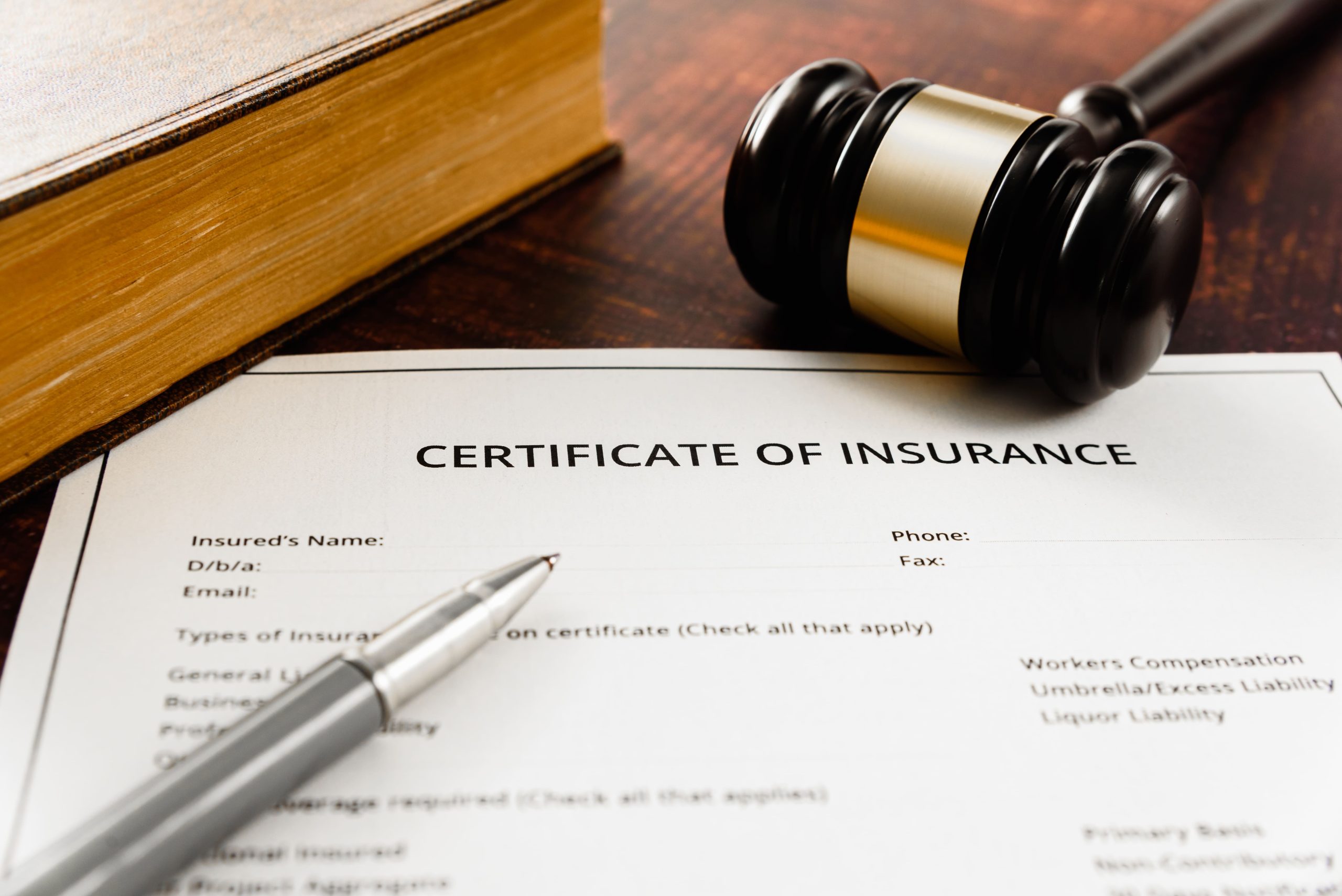Business Owner Policy Insurance
Key Takeaways
- Designed to save time and increase savings, a BOP combines property, liability and business interruption coverage into one convenient policy for small and medium-sized businesses.
- As for property insurance within a BOP, this protects crucial business assets, such as your business’ buildings and inventory, against risks like theft, fire and natural disasters though you’ll want to review the specific coverage limits and deductibles carefully.
- Liability insurance in a BOP offers crucial protection against third-party claims and adds credibility with your clients, so sufficient liability coverage is an essential part of your business risk management.
- Business interruption insurance covers lost income during disruptions, helping maintain financial stability, and companies should evaluate their unique risk profiles to confirm their coverage is adequate.
- Optional add-ons including cyber liability, or equipment breakdown insurance allow businesses to customize their BOP to address unique industry risks and fill in potential gaps in standard coverage.
- Whether a BOP, standalone policy, or CPP best fits your business’s needs depends on your coverage requirements, risk profile and desire for streamlined insurance. talk to an insurance pro, it’s a good idea.

Business owner policy insurance provides small business owners with a single solution that packages property and liability coverage. It frequently covers things such as fire, theft, and claims for injury or loss arising from operating a business.
Several owners choose this kind of policy for an easy way to remain protected from key dangers. To find what’s right for you, check out what each business owner policy covers and what limits or options are available for your line of work.
What is a business owner policy?
A business owner policy, or BOP, is a bundled insurance package, created with small to medium-sized businesses in mind. This policy combines multiple important coverages, including property, liability, and business interruption insurance into one plan. Its primary attraction is convenience businesses have one policy and one premium to deal with, rather than multiple separate insurance policies.
Not only does this simplify paperwork, but it’s often cheaper than purchasing each coverage individually. The average BOP cost begins at $1,687 annually, though premium is based on business risk, location, and coverage limits. A lot of owners feel that a BOP gives them a good base upon which to manage risk, but offers the flexibility to add on for specialized industry needs.

1. Property insurance
Property insurance is the heart of a BOP, protecting a business’s physical assets. It protects tangible assets such as structures, machinery and stock, safeguarding these fundamental resources from immediate perils. A fire in a warehouse or theft of computers can financially cripple you, but property insurance pays to fix or replace those items.
Policyholders should review their coverage limits and deductibles, which define the portion of expenses they will pay in the event of a claim. Business owner policy coverage isn’t limited to just accidental damage; it protects against the typical risks of fire, theft, and some natural disasters. For instance, if a storm tears off a shop’s roof, property insurance helps cover repair costs, minimizing the owner’s loss.
2. Liability insurance
Liability insurance is a must-have for any business that deals with customers, clients or even the general public. This coverage covers claims for bodily injury or property damage that occur in the course of business. A BOP typically has general liability, which covers slips and falls in your store, and potentially product liability if your business sells a product.
Lawsuits can be costly, with average claims occasionally amounting to tens of thousands of dollars and more. Sufficient liability coverage reduces these concerns and comf rts owners and clients. Businesses with full liability insurance often come across as more legitimate and dependable, helping to foster customer trust and loyalty.
3. Business interruption
Business interruption insurance in a BOP covers lost income and helps pay operating expenses if a business must close temporarily due to a covered event. Fires, floods or major repairs can stop your business, but this coverage helps replace lost income and can pay wages for up to 12 months.
This grant funding enables owners to prioritize recovery, instead of worrying about fixed expenses such as rent or payroll. Every business has to evaluate its own risks and find the appropriate limits of business interruption coverage, sufficient to get the operation through a challenging shutdown.
4. Optional add-ons
Optional add-ons allow owners to mold a BOP to suit the specific needs of their business. Some popular choices are cyber liability insurance for when data breaches occur and equipment breakdown coverage for unexpected mechanical failures. These options let businesses tailor to risks specific to their industry or operation.
For example, a boutique retailer might include coverage for off-premises power failures, while a web service might emphasize cyber insurance. Going over business activities and potential gaps is important for selecting smart add-ons, and policy reviews each year help coverage keep up with evolving risks.
Selecting smart add-ons, and policy reviews each year help coverage keep up with evolving risks.
Is a BOP right for you?
A Business Owner’s Policy, or BOP insurance, is essentially a packaged insurance plan for small to medium-sized businesses. It puts essential coverages such as general liability coverage, commercial property insurance, and business income insurance under one easy umbrella. Most companies are best suited when they’re small and low risk, but there are obvious indicators if a business owners policy is right for you or not.
A BOP works great if your business employs less than 100 workers, generates less than $5 million USD annually, and operates in an industry without significant risks. For instance, a corner shop, small tech firm or small restaurant tend to fall into these guidelines.
Our bundled model equates to one bill, one renewal, and one point of contact for all your fundamental coverage options. This configuration lets you focus less on the paperwork and more on your business operations. If you own or rent space, equipment, or stock, a BOP can cover these, so a break-in or fire won’t mean a total loss.
It saves you money typically you’ll pay $1,687 a year, or $141 a month, which is usually less than purchasing each policy separately. For a lot of people, this lower cost and ease of use are a compelling argument for a bop policy.
Not all businesses will align with a BOP. If you’re in high-risk industries like manufacturing, managing a parking lot, or a bank a basic BOP might not suffice. These businesses tend to have more liability claims or special risks, so they require custom plans that a BOP insurance policy can’t provide.
Nor is a BOP a good fit for companies that require very unique or specialized coverage, like cyber risk or professional liability, in detail. In those instances, you’ll have to purchase add-on policies or select a tailored plan. Even with a BOP, you can layer in some additional protection if you’re looking for more coverage, such as for data breaches or outages from power interruptions external to your location.
It’s smart to pause and consider what your business owns, your employee size and what you risk daily. Make a list of what you need to protect buildings, stock, tools, or cash flow and consider if a BOP covers all your bases.
You don’t want to discover a gap at the worst moment. For the full scoop, chat with an independent agent who understands your type of work and where you do it. They can assist you in selecting what to include or if you should search for a custom policy instead.

BOP versus other business insurance
BOP insurance is a packaged product tailored for low-risk small to medium-sized businesses. It bundles general liability and commercial property insurance, frequently with business interruption coverage, in one policy. That makes it a sensible choice for businesses such as storefront retailers, small boutiques and small cleaning services with limited exposures.
Compared to other business insurance products, like standalone policies or commercial package policies (CPPs), it usually depends on the business’s size, industry, risk profile and coverage needs.
Feature | BOP | Standalone Policies |
|---|---|---|
Coverage Type | Bundled | Individual (single risk) |
Administrative Complexity | Low | High (multiple policies) |
Cost Efficiency | Often more affordable | May be higher in total |
Customization | Limited | High |
Ideal Business Size | Small (<100 employees) | All sizes, esp. high-risk |
Common Inclusions | Liability, property, interruption | Specific to risk (e.g., cyber, auto) |
Suitability | Low-risk, small business | Unique/high-risk, specialized needs |

Standalone policies
Standalone policies provide targeted protection for a particular hazard, like cyber liability, workers’ compensation, or professional indemnity. Each agreement insures a single exposure, allowing for extremely customized coverage options. This sort of policy can handle unique risks that bundled products tend to leave out.
Juggling multiple standalone policies can drive up costs and create administrative hassle. Businesses must keep tabs on several renewal dates, terms and exclusions. There are often coverage gaps or overlaps, making risk management and financial planning a hassle.
In high-risk industries like construction, manufacturing, or tech standalone policies might be the best match. They allow businesses to cover custom exposures that a BOP insurance policy won’t cover, such as product recalls, environmental liabilities, or large commercial auto coverage.
Business owners should carefully consider the tradeoffs between the flexibility and depth of standalone policies versus the potential cost savings and simplicity of a business owners policy. For businesses with simpler requirements, a BOP is typically a neater, more convenient option.
Commercial package policy
Feature | BOP | Commercial Package Policy (CPP) |
|---|---|---|
Structure | Standard bundle | Modular, highly customizable |
Target Business Size | Small, low-risk | Medium to large, higher risk |
Custom Coverage | Limited | Extensive, add/remove coverages |
Cost | Predictable, often lower | Variable, depends on selected cover |
A commercial package policy (CPP) is designed for businesses with intricate risks or more substantial operations. Unlike a BOP, a CPP lets businesses select from a variety of coverage options like crime, inland marine, equipment breakdown, or commercial auto in addition to standard general liability and property.
This flexibility makes CPPs ideal for businesses outgrowing a BOP. If you have more than 100 employees, work at various locations or have any special exposures, a CPP can fill those holes.
CPPs aren’t only for enterprises. Even small businesses with complicated needs such as those dealing with hazardous materials, or providing niche professional services stand to gain from the modular format.
Business owners should examine their business and risk profile to determine if this route makes sense.
What a BOP doesn’t cover
A lot of times, it’s even more important to be aware of what isn’t covered. Neglecting these holes can result in expenses that most entrepreneurs aren’t prepared to encounter. Knowing what a BOP doesn’t cover keeps you from being caught off guard and ensures that you can adequately protect your business.
- Professional liability, also known as errors and omissions insurance, is one item a BOP doesn’t include. If a client sues you that you screwed up or were careless doing your job, this coverage kicks in. For instance, if a consultant provides advice that results in a client losing money, professional liability insurance will pay. Without it, you could be on the hook for legal fees and settlements.
- Cyber liability insurance is another popular exclusion. Most BOPs don’t cover losses from cyber attacks or data breaches, although some may offer limited data breach coverage as an add-on. If your business accepts sensitive data or stores customer data, one cyber attack could translate to big expenses for notification, recovery, and potential lawsuits. It’s usually a good idea to add this coverage.
- Most BOPs don’t cover business interruption. This is why if your business has to close due to a fire, flood, or other disaster, the lost income and ongoing expenses are not covered. You would have to separately purchase this protection, particularly if you operate a business where downtime is not an option.
- Workers’ comp is virtually never covered by a BOP. This is the mandatory insurance in most states and pays for medical expenses and lost wages of employees injured on the job. If you have employees, you have to purchase a different policy in order to remain compliant and protect your team.
- Commercial auto isn’t on a BOP, either. If your business has owned or used vehicle deliveries or travel, a separate policy is required. Personal auto policies usually won’t cover accidents occurring during business use.
- Umbrella insurance, which provides an additional layer of liability coverage over top your BOP, is absent. For higher-risk businesses, this additional coverage can be crucial in avoiding significant losses.
- Environmental liability, for one, isn’t covered by a BOP. If your business concerns chemicals or waste or other pollutants, you require a special policy. Clean-up costs or environmental damage claims are typically enormous and not something you want to cover yourself.
- Employee dishonesty insurance is not usually included in a BOP or it may only be available via an additional endorsement. For businesses that deal with cash, inventory or sensitive information – this coverage can be crucial.
Examining your BOP and understanding what it doesn’t cover assists you in identifying coverage gaps. You can then purchase additional policies or riders to cover those holes, ensuring your business is well covered across the board.

The hidden value of a BOP
How a BOP insurance policy combines essential coverages under one roof. It covers property, general liability, and frequently business interruption – all in one contract. This means a business owner doesn’t have to hunt down multiple carriers or remember multiple renewal dates. The outcome is a streamlined, minimalist business owners insurance policy that can be a time-saver and stress-reducer, particularly for risk novices.
One of the great appeals of a BOP is the peace of mind it provides. By bundling together core coverages, it protects a business from a lot of day-to-day hazards such as property damage due to a fire, a slip and fall, or a burglary. If a bakery gets hit by a power failure and has to close for days, BOP business interruption coverage can help pay the bills and staff wages until everything is back to normal.
That keeps the business above water during lean times, instead of causing the owner to panic and scramble for assistance or limp to difficult decisions. Even more, many BOP policies can be customized to particular sectors, like a retail store that requires additional inventory protection or a technology company needing data breach coverage. This flexibility allows each business to choose what works best, instead of accepting a cookie-cutter, one-size-fits-all approach.
Cost is another domain in which a BOP gleams. There’s often a discount for bundling coverages, making it less expensive than separate policies. For instance, a small design studio might shell out only $1,687 annually, or $141 a month, for a BOP. This bundle could encompass business property, general liability and a few niche covers such as equipment breakdown.
Some providers offer further discounts if you add even more coverages like cyber liability or coverage for losses caused by off-site utility issues, for example. These coverage options allow an entrepreneur to capture far beyond the fundamentals, all while maintaining a tightly controlled cost structure.
Administrative simplicity is a huge winner for busy entrepreneurs. Rather than managing a pile of insurance policies with separate agents, policies, and billing cycles, it’s all consolidated. This, besides cutting down on the paperwork, prevents you from forgetting a payment or letting a policy expire.
When a claim has to be made, it’s easier one point of contact and an easier process. As a small business owner, time saved on paperwork can be time spent on things that matter more, like growth or customer care.
A smart BOP is strategic as well. It keeps a company open and paying bills after a blow, but it signals to partners, lenders, and staff that the business is protected and forward-thinking. Your first step to finding the right BOP is knowing what risks your business faces, then shaping the policy to cover those needs. Properly configured a BOP can be a stable foundation for sustained triumph.
Navigating your policy and claims
Business owner policy insurance, typically known as a BOP insurance, combines property, liability, and business interruption coverage into a single policy. Understanding your business owners insurance policy what it covers and what it excludes matters as much as having the insurance in the first place. It can be tough to wade through policy documents, but it’s crucial to understand the details.
Check the coverage limits; these determine the maximum amount your insurer will pay for a claim. See the exclusions, which outline what isn’t covered. For instance, most BOPs do not include protection from flood or earthquake damage or losses due to cyber attacks. If your business resides in a flood zone or manages a significant amount of customer information, you’ll likely require additional protection. Always tailor your policy to your actual risks, not just industry standard.
Claims – records matter. Maintain electronic and physical copies of receipts, invoices, contracts, and inventory lists. If you have a café, for instance, keep receipts for kitchen appliances, evidence of purchase for laptops, and any lease agreements. If something does occur fire, theft, whatever these records streamline proving what you lost and its value.
Well-organized, updated documentation allows the insurer to navigate your claim with less red tape or skepticism. Business owner policy insurance claims aren’t always straightforward. Every step matters.
- Don’t wait a day to report it. Ring your insurer or their online porthole. Provide date, time and description.
- Document the loss. Snap pictures or record movies. Inventory broken/lost stuff. Save wreckage if possible.
- Collect supporting documentation. Assemble police reports, invoices, old receipts and proof of ownership.
- Complete claim forms. Please answer all questions. Verify for incomplete data.
- Collaborate with the claims adjuster. They might call on your company. Present them with your documentation and address their inquiries.
- Be sure to follow up. Keep in touch until your claim is resolved. Take notes of calls and emails.
Communicate with your insurer frequently, not only when something happens. Get them to talk you through your policy in simple terms. See if your business needs have shifted like new products or services, or a relocation.
Request a coverage review annually. Good communication means you identify disconnects before they fester and explode. If you do have to file a claim, knowing who to call and what to show can save time and stress.
Conclusion
To stay the course, a business owner policy provides true reassurance. It packages key risks into a simple plan. Shop owners, start-ups, and small tech firms all use BOPs to reduce hassles and save time. The policy usually includes fire, theft, and certain lawsuits key fundamentals that pack a punch. A BOP doesn’t cover every risk, so check what you need most. Remember, every business is different. Inquire, shop, and consult with a trusted agent. For additional tips or to share your own, stop by the blog and leave a note. Real talk develops real business acumen.
Frequently Asked Questions
What is a business owner policy (BOP)?
BOP, or business owners policy, is a type of bop insurance designed for small businesses. It typically includes commercial property insurance and general liability coverage, making it more convenient and affordable than separate insurance policies.
Who should consider a BOP?
A BOP insurance policy is a perfect fit for small businesses with physical locations or assets, offering essential coverage options for business owners against property and liability risks in one comprehensive policy.
How does a BOP differ from general liability insurance?
A BOP insurance policy packages general liability coverage with commercial property insurance, offering small businesses broader coverage options in one bundle, unlike a general liability insurance policy that only covers injury or damage claims.
What does a BOP not cover?
While a BOP insurance policy excludes professional liability and workers’ compensation, separate commercial auto insurance policies are typically necessary for those unique risks.
Can a BOP save you money?
Indeed, a bop insurance policy usually costs less than purchasing separate commercial property insurance and liability coverages. Insurers often grant a discount on your total premium for bundled business owners policies.
How do you file a claim with a BOP?
To make a claim, contact your insurer and provide specifics about the incident. They can guide you through the process and help clarify your coverage options under the business owners insurance policy.
Can you customize your BOP coverage?
Yes, most providers allow you to customize your business owners policy with optional coverages, like data breach or equipment breakdown, ensuring proper coverage for your unique risks.
